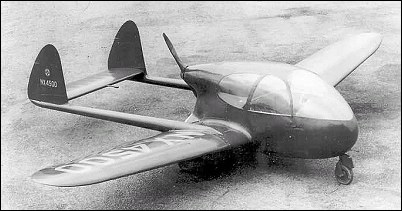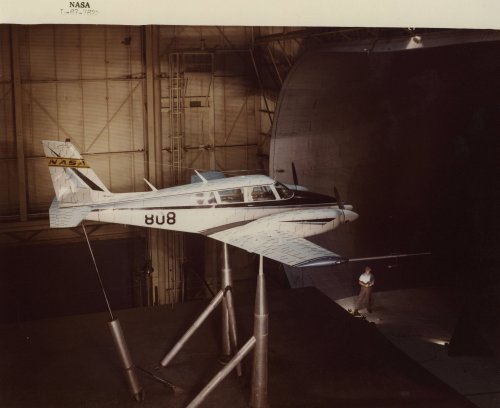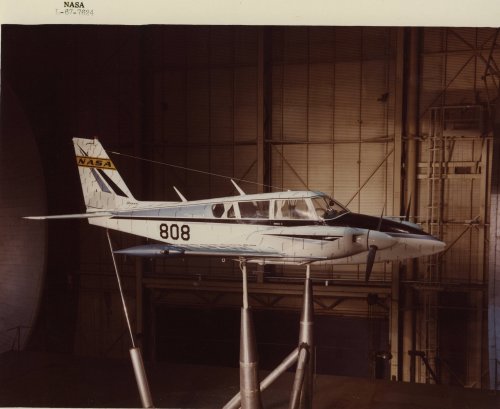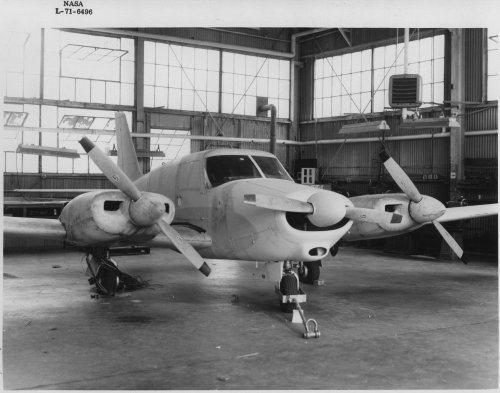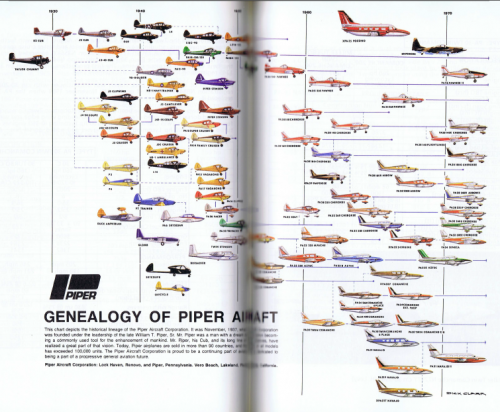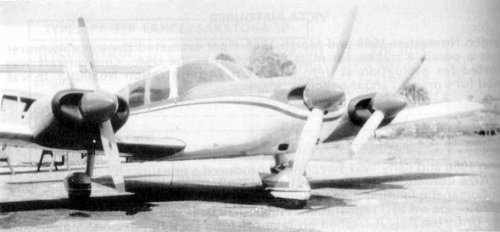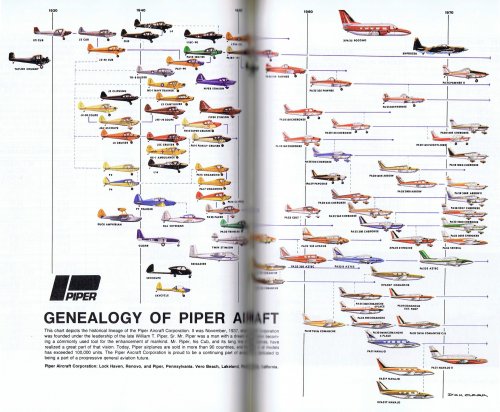A complete list of Piper basic designations (no sub-variants at this stage):
Part I
J-2 New Cub, Cub — Single-engined high-wing cabin monoplane, a development of the earlier Taylor/Jamoneau H-2 Cub design (1935).
J-3 Cub — Development of the J-3 also used by the military in the O-59 Patrol and L-4/TG-8/NE Grasshopper variants (1938).
J-4 Cub Coupe — Four-seat derivative of J-3, some used by the military as the Grasshopper (1939).
J-5 Cub Cruiser — More powerful version also used by the military as the C-83/L-4F/HE Grasshopper and L-14 Army Cruiser variants (1940).
P-1 Cub Clipper, Clipper, Duck — Originally known as the 1937 Applegate Amphibian, which used wings and other components of the Cub (1940).
P-2 Cub — High-wing cabin monoplane with enclosed cabin, new tail, single-piece door; was to replaced the J-3 in production before the war (1940).
P-3 "Rosewing Cub" — a Cub Coupe with experimental William Rose wing with slats, slotted ailerons, flaps; also known as J-4RX [NX22941] (1939).
P-4 Cub — a four-seat development of P-2; production planned for 1942 but cancelled because of the war [NX38300] (1941).
P-5 "Cantilever Cub" — a J-3C-65 fitted with a strutless cantilever wing, also known as J-3X [NX42111] (1944?).
PT-1 Trainer, Cub PT, XPT — Experimental tandem two-seater, low-wing monoplane trainer [NX4300] (1942).
Glider Bomb, "Glomb" — Remotely-controlled unmanned bomb-carrying glider for U.S. Navy as LBP; order reduced from 100 to 35, then cancelled (1942).
PA Skycoupe — An alternate designation for the PWA-1.
PB Skycoupe — A four-seat version; never flew.
PWA-1 Skycoupe — Two seat low wing twin-boom monoplane ("PWA" stood for "Post War Aircraft"); later became PA-7 [NX4500] (1943).
PWA-6 Skysedan — A prototype built in 1945 as a four-seat development of the PT-1 trainer; redesignated as PA-6 [NX580] (1945).
PWA-8 Cub Cycle — Single seat, mid-wing single-engine monoplane, later became the PA-8 [NX47Y] (1944).
PA-6 Sky Sedan — Four seat, low-wing retractable gear monoplane (1945).
PA-7 Skycoupe — Two seat low wing twin-boom monoplane, was PWA-1; production cancelled (1944).
PA-8 Skycycle — Cheap aircraft built from surplus F4U Corsair tanks; formerly known as the PWA-8 Cub Cycle (1945).
PA-9 — Single-engined high-wing observation and liaison aircraft project to replace the L-5; not built (1945).
PA-10 — Single-engined low-wing side-by-side two-seater aircraft project, similar in design to the Thorp F-11 Sky Skooter (1946).
PA-11 Cub Special — two-seat light aircraft development of the Cub, also used by the military as the L-18B Trainer (1947).
PA-12 Super Cruiser — Single-engined high-wing cabin monoplane developed from J-5C (1946).
PA-13 — not used
PA-14 Family Cruiser — a four-seat variant of the Super Cruiser (1948).
PA-15 Vagabond — a side-by-side two-seater (1948).
PA-16 Clipper — Four-seat version of the PA-15 (1949).
PA-17 Vagabond, Vagabond Deluxe, Vagabond Trainer — Dual-control variant of the PA-15 (1948).
PA-18 Super Cub, Cub Special — improved version of the Cub, many to the military as the L-18C/L-21/U-7 (1950).
PA-19 Super Cub — Original designation of the military variant of the PA-18, only three built;
all subsequent military production were designated as PA-18s;
designation also used in France for 90 hp Super Cubs returned to civilian use
PA-20 Pacer — Four-seat, conventional landing gear, light cabin aircraft; like PA-16 with a more powerful engine (1949).
PA-21 Twin — Production version of the Baumann Brigadier, cancelled; designation never re-allocated to avoid confusion with L-21 (1949).
PA-22 Tri-Pacer, Colt, Caribbean — Updated version of the PA-20 with nose wheel; four-seat, tricycle landing gear, light cabin aircraft (1950).
 rojected pressurized Twin Comanche,not built.
rojected pressurized Twin Comanche,not built.
